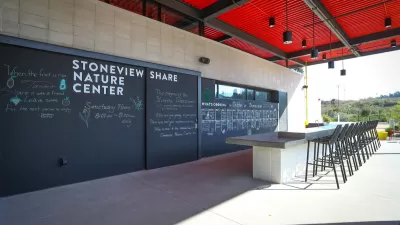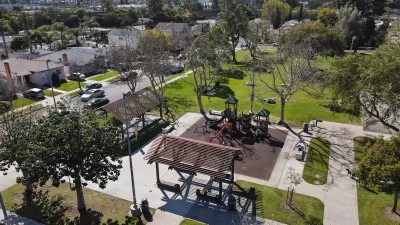Los Angeles County is working towards transforming underutilized land into a vibrant pocket park in the City Terrace neighborhood of East LA.

Park planning is a key function of the Los Angeles County Department of Parks and Recreation (DPR). DPR plans with equity and implementation in mind, ensuring that park plans prioritize the neediest communities and do not end up just sitting on bookshelves. Examples of such planning efforts include the Los Angeles Countywide Parks and Recreation Needs Assessment and Community Parks and Recreation Plans (CPRP) for underserved communities.
Each CPRP begins with an examination of local demographics, existing parks and recreational facilities, parkland gaps, recreation programs, tree canopy coverage, transportation and connectivity to parks, as well as availability of land for new parks. This baseline information, together with public input, informs a detailed assessment and prioritization of local park needs. This, in turn, guides the development of a green-space vision, conceptual designs of potential new park projects, and strategies and implementation actions to address the identified needs — with the overall goal of making the communities more sustainable through a variety of efforts that offer wide-reaching benefits and impacts.
As part of its ongoing efforts to implement the CPRPs, DPR has been working on the Folsom Street Pocket Park Planning Project in the City Terrace neighborhood of East Los Angeles with the goal of transforming a vacant lot into a vibrant public space. DPR has been seeking public input and collaborating with residents to ensure that the park meets local needs and desires. Environmental sustainability is a core focus, with plans for drought-tolerant landscaping and water-efficient designs to create a green space that enhances the quality of life for the surrounding neighborhood.
FULL STORY: Folsom Street Pocket Park Planning Project

Planetizen Federal Action Tracker
A weekly monitor of how Trump’s orders and actions are impacting planners and planning in America.

Restaurant Patios Were a Pandemic Win — Why Were They so Hard to Keep?
Social distancing requirements and changes in travel patterns prompted cities to pilot new uses for street and sidewalk space. Then it got complicated.

Map: Where Senate Republicans Want to Sell Your Public Lands
For public land advocates, the Senate Republicans’ proposal to sell millions of acres of public land in the West is “the biggest fight of their careers.”

Maui's Vacation Rental Debate Turns Ugly
Verbal attacks, misinformation campaigns and fistfights plague a high-stakes debate to convert thousands of vacation rentals into long-term housing.

San Francisco Suspends Traffic Calming Amidst Record Deaths
Citing “a challenging fiscal landscape,” the city will cease the program on the heels of 42 traffic deaths, including 24 pedestrians.

California Homeless Arrests, Citations Spike After Ruling
An investigation reveals that anti-homeless actions increased up to 500% after Grants Pass v. Johnson — even in cities claiming no policy change.
Urban Design for Planners 1: Software Tools
This six-course series explores essential urban design concepts using open source software and equips planners with the tools they need to participate fully in the urban design process.
Planning for Universal Design
Learn the tools for implementing Universal Design in planning regulations.
Heyer Gruel & Associates PA
JM Goldson LLC
Custer County Colorado
City of Camden Redevelopment Agency
City of Astoria
Transportation Research & Education Center (TREC) at Portland State University
Camden Redevelopment Agency
City of Claremont
Municipality of Princeton (NJ)





























